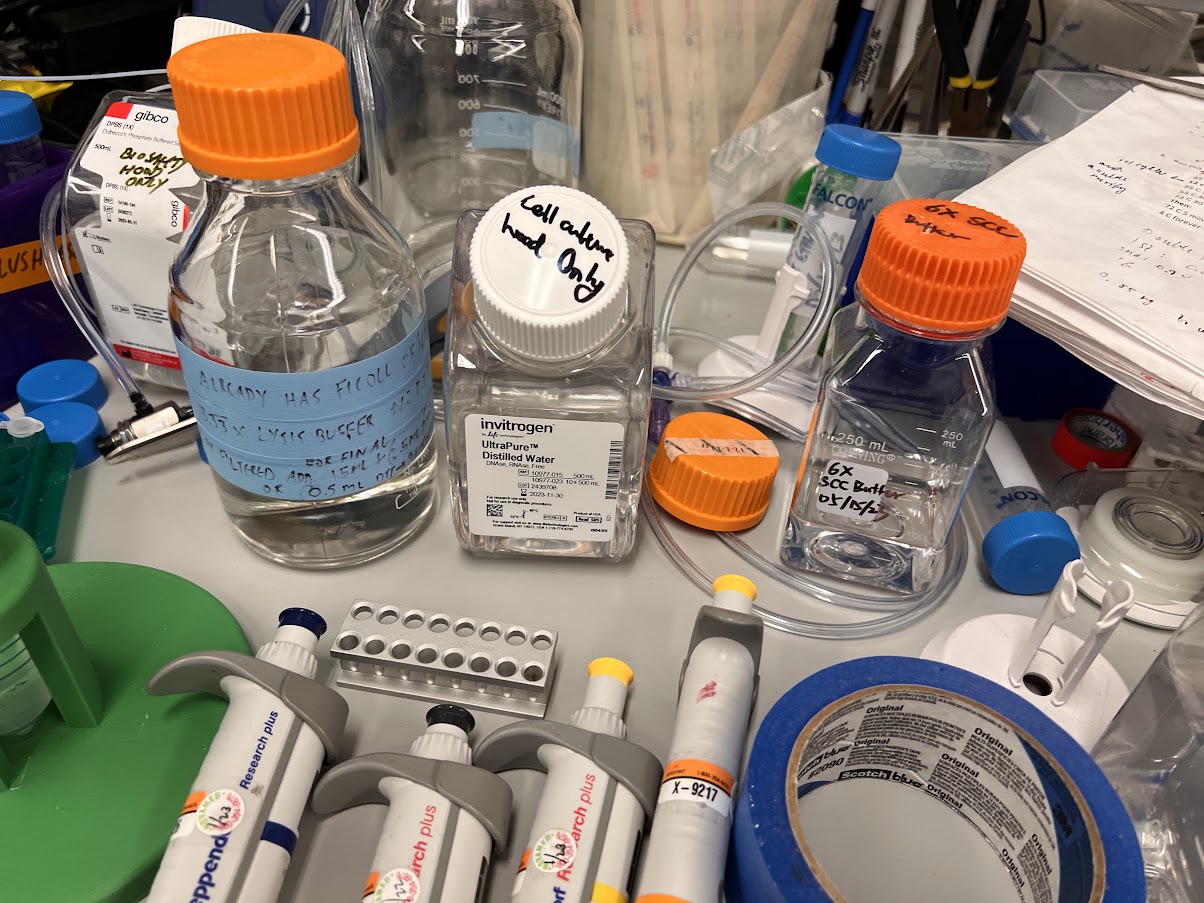Protocol for Recycling Beads for Chrono-Seq Device and Preparing Solutions¶
Best Practices:¶
- Remember to put back the reagents back to their storage location at 4°C or -20°C once you are done with using them.
- Get fresh new microtips/sterile-disposable pipettes after each step, unless mentioned otherwise.
- Important to avoid cross-contamination.
Equipment Used:¶
- Our lab uses the refrigerated Sorval ST8R Centrifuge. You can find CAD files to print some of the parts here.
- We bought the 50ml Inserts and Printed the Rest.
- You can modify the CAD files to print the 50ml Inserts as well.
- Use PLA or TPU for the prints.
- CELLTREAT Pipette Controller
- Eppendorf Pipettes 6-Pack
- Pipette Tips:
- Larger Volume Pipettes:
- Disposable Sterile Falcon Tubes:
- Disposable Sterile 250ml GL45 Bottles, Individually Wrapped
Protocol for Preparing Priming Solutions for Chrono-Seq Device.¶
- Turn on the UV for the Cell Culture Hood and wait 15 minutes.
- Make more 6X SSC Buffer from 20X Stock while you are waiting. Use these 250ml Plastic Bottles.
- Turn on the Cell Culture hood and clean your work area. From this point onwards work aseptically inside the Cell culture hood.
- Inside the Cell Culture hood, make 1X Lysis buffer from the 3.33X Lysis Buffer Stock. You can make 50ml of 1X Lysis buffer by mixing 15 ml of 3.33X Buffer with 35ml of Distilled Water. Please use specially labeled Distilled Water bottles which should only be opened inside the Cell culture hood.

- With the Cap closed shake the 1X Lysis buffer vigorously.
- Filter the 1X Lysis buffer using a 40μm Falcon Cell Strainer (Blue Color).
- How many timepoints or injections are you running for your experiment? Change
number_of_timepoints_or_injectionsbelow to Calculate how many of each Tube you need to prepare:
Optional Note: I recommend adding +1 to
number_of_timepoints_or_injectionsas a backup in case something goes wrong: